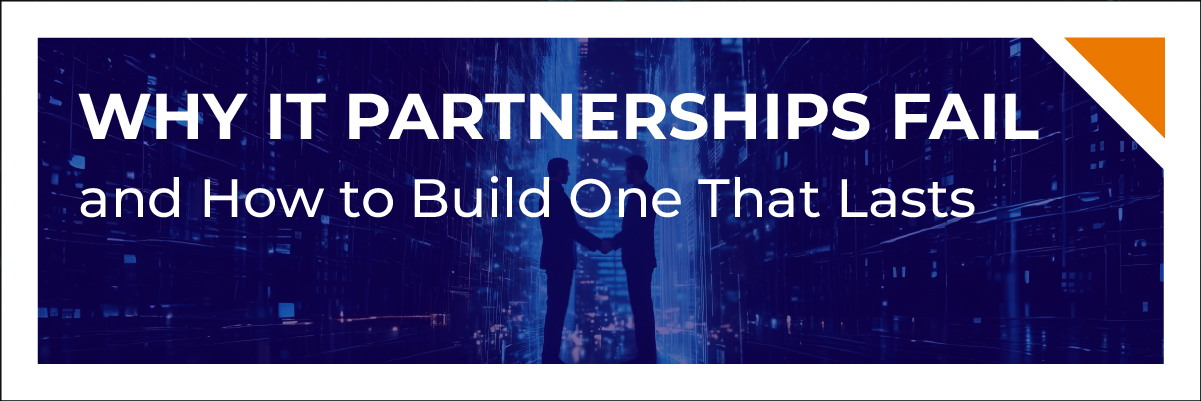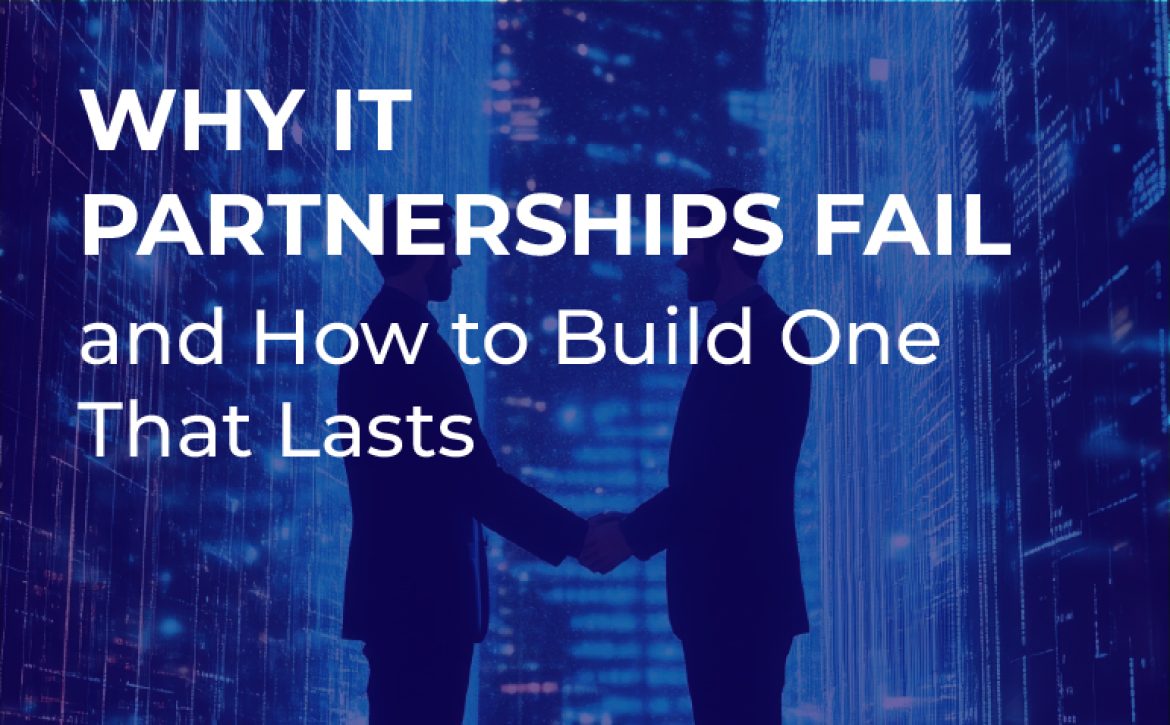IT Vendor Relationships: Why They Fail & How to Build Trust

Why IT Partnerships Fail — and How to Build One That Lasts
In IT, partnerships are built on promises — faster support, fewer issues, better performance.
But for too many organizations, those promises fade fast.
The relationship starts strong, but over time, communication breaks down, issues resurface, and the partner’s value becomes harder to see. What began as a collaboration turns into a transaction — tickets in, responses out, trust eroded.
At Protected Harbor, we’ve seen this cycle from both sides — and we’ve built our model to break it.
Here’s why most IT partnerships fail, and how to create one that actually lasts.
The Problem: Misaligned Expectations
Most IT partnerships fail not because of technology — but because of expectations.
Clients expect proactive strategy; providers deliver reactive support.
What starts as a “strategic partnership” quickly becomes ticket management.
The provider focuses on fixing what’s broken, not preventing the next problem.
The client, meanwhile, feels unheard — their goals reduced to service-level metrics.
That disconnect breeds frustration on both sides.
“True partnerships are built on shared values and goals. At Protected Harbor, we collaborate with clients who value teamwork and transparency. We’re incentivized to prevent problems, not react to them. Our model only works when our clients succeed — which is why we prioritize collaboration, shared goals, and proactive solutions over quick fixes.” .
— Jeff Futterman, COO, Protected Harbor
The Business Impact: From Partnership to Transaction
When an IT provider becomes just a vendor, the cost goes beyond miscommunication.
Reactive service models create hidden inefficiencies that drain both time and budget:
- Ticket fatigue: The same recurring issues resurface without long-term resolution.
- Downtime drag: Without root-cause analysis, outages repeat — costing productivity.
- Trust erosion: The client stops reaching out proactively because they expect minimal results.
- Lost opportunity: IT remains a cost center instead of a driver of innovation.
The result? A partnership that feels transactional, not transformational.
The Protected Harbor Difference: “Own the Outcome”
At Protected Harbor, we operate on a different philosophy: Own the Outcome.
That means we don’t stop at fixing issues — we take full responsibility for eliminating them.
Our engineers don’t just respond to tickets; they diagnose patterns, design solutions, and rebuild systems that prevent repeat failures.
Every engagement — from onboarding to daily operations — is built around collaboration, transparency, and accountability.
Providing constant updates and clear communication is central to that approach. We believe trust is built in the moments between incidents — through transparency, consistency, and honesty about what’s really going on. Our goal is to make IT boring — meaning stable, predictable, and worry-free. We monitor everything proactively, fix issues before the client even notices, and communicate openly every step of the way.
That’s the foundation of every relationship we build — genuine, accountable, and focused on long-term success, not quick fixes or short-term contracts.
Here’s how we build partnerships that last:
✅ Root-Cause Resolution: We dig deeper than the symptoms to fix what’s really broken.
✅ Transparent Communication: Regular strategy calls, shared dashboards, and a guaranteed 15-minute response time — so clients are never left waiting for answers.
✅ Proactive Monitoring: 24/7 visibility that identifies and resolves issues before you notice them.
✅ Long-Term Roadmaps: We align technology strategy with your business growth — not just your current pain points.
“Accountability is core to how we operate. Every ticket is owned by a technician from start to finish — even if it’s escalated. We hold ourselves to strict goals, like resolving 80% of tickets the same day and responding within 15 minutes, and we measure performance daily. Our team is rewarded based on these results, which is why our customers experience dependable, high‑quality support.” .
— Jeff Futterman, COO, Protected Harbor.
Case in Point: From Frustration to Partnership
A new client came to us after years of dealing with an MSP that “checked the boxes” but never solved the deeper issues.
They experienced constant outages, finger-pointing between vendors, and a backlog of unresolved tickets that stretched months.
Protected Harbor stepped in with a different approach.
We performed a comprehensive infrastructure assessment, mapped every dependency, and identified the recurring sources of instability.
Instead of applying temporary patches, our engineers redesigned the core systems for resilience and clarity.
Within 90 days, the client went from reactive chaos to predictable stability:
✅ 99.99% uptime
✅ Zero recurring incidents
✅ A clear roadmap for modernization and scalability
Most importantly, the relationship shifted from frustration to trust.
They stopped calling us their “IT provider” — and started calling us their “IT partner.”
Final Thoughts: Building IT Relationships That Endure
The best IT partnerships don’t rely on contracts — they rely on accountability.
They’re built on shared ownership, consistent communication, and a relentless focus on outcomes, not optics.
Technology changes fast, but partnership principles don’t:
Own the outcome. Solve the root cause. Build trust that lasts.
At Protected Harbor, we’re redefining what it means to be an IT partner — one reliable, proactive, and transparent relationship at a time.
Ready to Build a Partnership That Lasts?
Schedule a complimentary Infrastructure Resilience Assessment and see how a true partnership model transforms performance, reliability, and trust.



